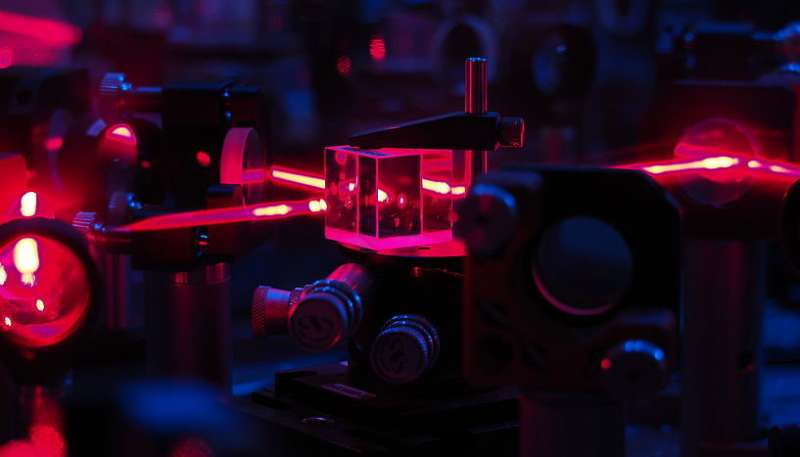Hidden bridge between quantum experiments and graph theory uncovered

An answer to a quantum-physical question provided by the algorithm Melvin has uncovered a hidden link between quantum experiments and the mathematical field of Graph Theory. Researchers from the Austrian Academy of Sciences and the University of Vienna found the deep connection between experimental quantum physics and this mathematical theory in the study of Melvin's unusual solutions, which lies beyond human intuition. They now report in the journal Physical Review Letters.
Phenomena of quantum physics are perfectly computable—but often elude human logic. In the future, it would be precisely computer algorithms that could make a decisive contribution to the solution of quantum-physical questions, where human logic does not get any further, as was demonstrated now by Melvin. The algorithm developed by researchers of the Austrian Academy of Sciences (ÖAW) and the University of Vienna is actually being created for the calculation of technical solutions for quantum physical experiments. For a general question asked last year, Melvin provided a solution that proved to be surprisingly practical—but initially completely out of touch with human intuition.
Remarkable number sequence
"The solution could practically be implemented in the form of an experiment in the laboratory," confirms quantum physicist Mario Krenn from the research group of Anton Zeilinger, professor at the University of Vienna and group leader at the Institute of Quantum Optics and Quantum Information of the Austrian Academy of Sciences. "But at first we did not understand how it actually works," the researcher continues.
In the analysis of this solution calculated by Melvin, the researchers initially groped in the dark. Until they came up with a remarkable sequence of numbers known only in the so-called graph theory—a sophisticated area of mathematics that has been used to describe networks such as the Internet or neural networks.
New experimental methods
The unusual approach, which would have remained hidden to quantum physicists, prompted the scientists to further investigate this connection. As they now report in the journal Physical Review Letters, there are great similarities between experimental quantum physics and mathematical graph theory: If methods and knowledge from graph theory are used to calculate and plan a quantum experiment, it is possible to make very precise and novel statements about the results. "Properties of quantum experiments can be calculated using graph theory, and questions in graph theory can be answered in quantum experiments," explains Krenn. In this way, it is also possible to grasp quantum technology as a graph or a network in order to explore new experimental possibilities.
Also for quantum physicist Anton Zeilinger this bridge, discovered thanks to Melvin, is very promising: "It was very surprising to see that there is a new deep connection between quantum physics and mathematics." What concrete potential this finding holds, is currently not yet to estimate. "It is to be expected," says Zeilinger, "that this knowledge will be of importance for the development of both areas in the future."
More information: Mario Krenn et al. Quantum Experiments and Graphs: Multiparty States as Coherent Superpositions of Perfect Matchings, Physical Review Letters (2017). DOI: 10.1103/PhysRevLett.119.240403
Journal information: Physical Review Letters
Provided by University of Vienna




















